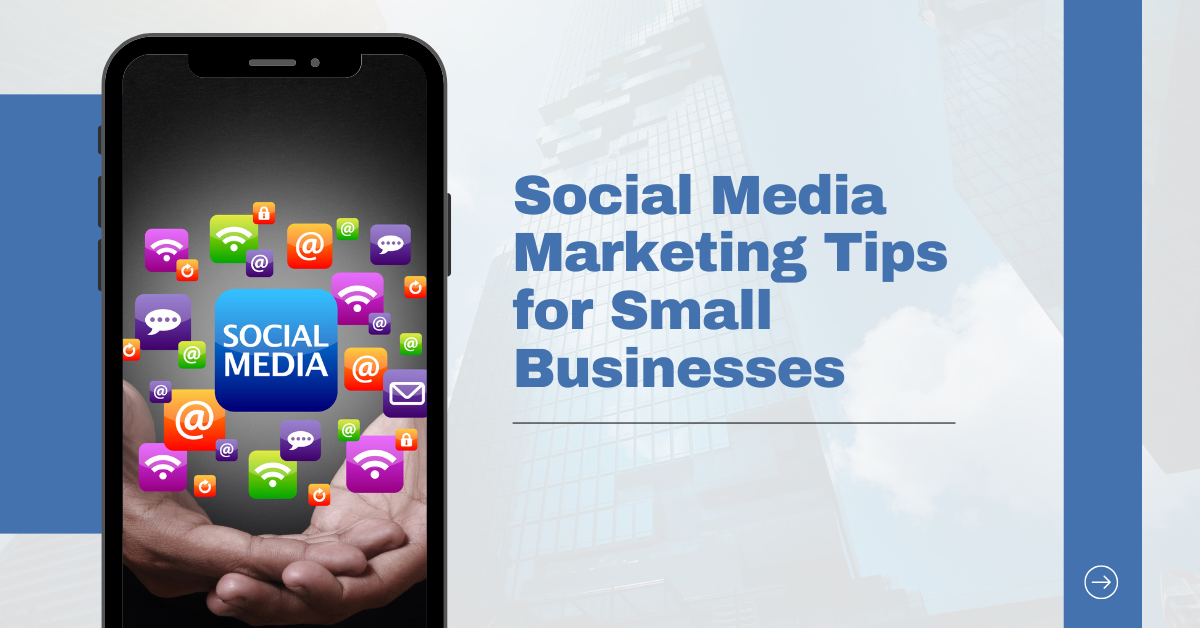In an era where social media has become indispensable for businesses, navigating the ever-evolving landscape can be challenging.
Social media marketing for small businesses presents a unique opportunity to connect directly with target audiences, build brand awareness, and compete effectively in the digital marketplace, all while maintaining cost-effective strategies that align with limited budgets.
In this article, we’ll explore 17 essential social media marketing tips tailored specifically for small businesses.
From harnessing the power of trends to optimizing your content strategy, we’ll dive into the strategies that will help your small business thrive in the dynamic world of social media marketing.
Let’s unlock the potential of your brand’s online presence.
What is Social Media Marketing?
Social media marketing is a digital marketing strategy that utilizes various social media platforms to promote products, services, or brands.
It involves creating and sharing content tailored to the platform and audience, engaging with users through comments, messages, and posts, and running targeted advertising campaigns.
The primary goals of social media marketing include increasing brand visibility, driving website traffic, fostering customer engagement and loyalty, and ultimately, generating leads and conversions.
Social Media Tip
Diversify your social media content to keep your audience engaged and interested. Mix text-based posts with images, videos, and infographics to provide a well-rounded and visually appealing experience for your followers.
It’s a dynamic and ever-evolving field that empowers businesses to connect with their audiences on a personal level and adapt to changing consumer behaviors.
Why is Social Media Marketing Important for Small Businesses?
In an increasingly digital world, small businesses can’t afford to overlook the impact of social media marketing. It’s a game-changer that can level the playing field and open up new avenues for growth and success.
4 Reasons Why Social Media Marketing is Important for Small Businesses:
- Cost-Effective Reach: Social media platforms offer an affordable way for small businesses to reach a wide audience. With a well-crafted strategy, they can connect with potential customers locally and globally without the hefty advertising budgets required by traditional marketing methods.
- Brand Visibility: Establishing a strong online presence through social media helps small businesses enhance their brand visibility. Consistent engagement and content sharing make it easier for customers to recognize and remember their brand, fostering trust and credibility.
- Audience Insights: Social media platforms provide invaluable data and analytics. Small businesses can use this information to understand their audience’s preferences, behaviors, and demographics. This knowledge enables them to tailor their marketing efforts for maximum impact.
- Community Building: Social media allows small businesses to build and nurture a loyal online community. By engaging with customers through comments, messages, and posts, they can create a sense of belonging and loyalty, turning satisfied customers into brand advocates.
17 Social Media Marketing Tips for Small Businesses
Now for the part you’re here for – the 17 social media marketing tips for small businesses.
In this section, we’ll delve into essential strategies, tactics, and best practices to help you maximize your online presence, engage your audience effectively, and achieve your business objectives.
So, without further ado, let’s dive right into it.
1. Know Your Audience
To succeed in social media marketing, it’s essential to start by truly understanding your audience.
This begins with conducting comprehensive market research to gain valuable insights into your target demographic.
By delving into their preferences, behaviors, and pain points, you can uncover what makes them tick. Knowing what your audience is looking for and what they expect from your content allows you to create and share posts, images, and videos that resonate with them.
This not only helps in building meaningful connections but also increases your chances of driving conversions and achieving your business goals.
2. Stay Consistent
In the realm of social media marketing, consistency reigns supreme. It’s a simple but powerful principle: If you consistently deliver quality content and engage with your audience over time, you build trust and credibility. Think of it as the slow and steady path to success.
When you maintain a regular posting schedule, adhere to your brand’s unique voice and style, and persist in your efforts, you create a dependable online presence that your audience can rely on.
Consistency not only keeps your audience engaged but also helps reinforce your brand identity. It makes your business memorable and trustworthy. Whether it’s posting daily, weekly, or on a schedule that suits your audience best, staying consistent ensures you remain on their radar.
3. Start Trends
In the dynamic world of social media, being a trendsetter can set your small business apart. Here’s how to make it happen:
- Engage Actively: Participate actively in current trends by joining relevant conversations, using trending hashtags, and sharing content related to the latest buzz.
- Content Innovation: Continuously brainstorm and create fresh, innovative content that sparks conversations and attracts attention in your niche.
Stay ahead of the curve by actively participating in current trends and even creating your own when the opportunity arises. Starting trends not only boosts your visibility but also positions your brand as an innovator in your industry.
By consistently offering fresh and creative content, you can inspire and captivate your audience, ultimately driving more engagement and interest in your products or services. So, embrace the role of trendsetter on social media, and watch your brand soar to new heights.
4. Provide Value to Your Audience
The golden rule of social media marketing is to always provide value to your audience. When you prioritize offering something meaningful, informative, or entertaining to your followers, you create a two-way street of engagement. Remember, success often follows when you put your audience’s needs and interests first.
By consistently delivering valuable content, you not only build trust and loyalty but also increase the likelihood of receiving value in return, whether it’s through increased engagement, brand advocacy, or conversions. So, make it your mission to provide value to your audience, and success will naturally follow suit.
Social Media Tip
Collaborate with influencers or complementary businesses to expand your reach and credibility on social media. Partnering with others can introduce your brand to new audiences and build trust among your followers.
5. Think Long Term
In the realm of social media marketing, it’s crucial to resist the temptation of quick wins and instead adopt a long-term perspective. Sustainable success often comes from strategic thinking and planning for the future.
Building a strong and enduring online presence, nurturing relationships with your audience, and consistently delivering value are the keys to reaping substantial rewards over time.
Remember, it’s the businesses that invest in the long game that tend to see the most significant returns. So, focus on long-term growth, and you’ll find that the patient approach can lead to substantial and lasting success in the world of social media marketing.
6. Create a Content Calendar
Using a content calendar for social media is an invaluable tool to stay organized, consistent, and effective in your marketing efforts. It helps you plan and schedule your content in advance, ensuring a cohesive and strategic approach. Here’s how to create one:
- Define Your Goals: Start by outlining your social media marketing goals. Are you aiming to increase brand awareness, drive traffic to your website, or boost engagement? Your content calendar should align with these objectives.
- Identify Your Target Audience: Understand who your ideal audience is, their preferences, and when they are most active on social media. Tailor your content schedule to reach them effectively.
- Content Themes and Topics: Plan a variety of content types, from blog posts and videos to infographics and user-generated content. Create a list of relevant topics and themes to cover over time.
- Choose a Content Calendar Tool: Utilize digital tools like Loomly to streamline your content planning. Loomly provides features for scheduling, collaboration, and analytics, making it easier to manage your social media calendar effectively.
- Set a Posting Schedule: Establish a posting schedule that aligns with your audience’s online activity and your available resources. Consistency is key, so aim for regular, well-timed posts to maximize engagement and reach.
By creating and using a content calendar with tools like Loomly, you can better organize your social media strategy, ensuring that your content is not only relevant but also delivered consistently to your target audience.
7. Monitor Trends
Staying ahead in social media marketing requires vigilant trend monitoring. It’s essential to keep your finger on the pulse of what’s happening in your industry and on social media platforms in general.
Here’s how to do it effectively:
Staying Up to Date with Trends: Follow industry news, subscribe to relevant newsletters, and engage with thought leaders in your field. This will help you stay informed about the latest developments and shifts in your industry.
Finding Up-and-Coming Trends: Pay attention to emerging trends on social media platforms. Keep an eye on hashtags, viral challenges, and trending topics. Tools like social media listening and analytics can help you identify what’s resonating with your audience.
By actively monitoring trends, you can adapt your social media strategy to capitalize on opportunities, create timely content, and maintain a fresh and engaging presence that resonates with your audience.
8. Use the Right Tools
Leveraging the right tools in your social media marketing arsenal can make a world of difference. These tools streamline your efforts and enhance your overall strategy by providing insights, automation, and creative resources.
Tools simplify tasks such as content creation, scheduling, analytics, and audience engagement. They can save you time and effort, enabling you to focus on strategic aspects of your social media strategy.
Tools like Canva offer intuitive graphic design capabilities, making it easy to create visually appealing content. Platforms like Sprout Social provide comprehensive social media management, scheduling, and analytics. SocialBee helps with content scheduling and audience targeting.
Consider using Canva for stunning visuals, Sprout Social for comprehensive management, and SocialBee for advanced scheduling and audience targeting. These tools empower small businesses to compete effectively in the social media landscape while maintaining efficiency and effectiveness.
9. Use Analytics
Analytics are an indispensable part of social media marketing as they provide valuable insights into the performance of your campaigns and content. They help you understand what’s working and what needs improvement, enabling data-driven decisions to optimize your strategy.
Analytics help measure key metrics like engagement, reach, click-through rates, and conversions. By analyzing these data points, you can identify trends, determine the effectiveness of your content, and make informed adjustments to achieve your social media goals.
Google Analytics: Google Analytics is a powerful web analytics service that tracks and reports website traffic. While not a social media-specific tool, it’s valuable for understanding the traffic driven to your website through social media channels.
Google Analytics provides detailed data on user behavior, traffic sources, and conversions, allowing you to measure the impact of your social media efforts on your website’s performance. By integrating Google Analytics into your social media strategy, you gain a comprehensive view of how your online presence across different platforms contributes to your overall digital success.
10. Engage With Your Audience
Active engagement with your audience is a fundamental pillar of successful social media marketing. It involves two-way communication, fostering relationships, and creating a sense of community. Here’s why it’s essential and how to do it effectively:
Engagement humanizes your brand, making it relatable and trustworthy. When you respond promptly to comments, messages, and mentions, you demonstrate your commitment to customer satisfaction.
Furthermore, engaged followers are more likely to become brand advocates, sharing your content and recommending your products or services to others.
How to Do It Effectively: Dedicate time to engage with your audience daily. Respond to comments on your posts, answer questions promptly, and acknowledge feedback, whether positive or negative.
Encourage conversation by asking questions, running polls, and conducting Q&A sessions. By actively participating in conversations, you build a loyal and interactive online community around your brand, which can significantly impact your success in social media marketing.
11. Know the Best Hashtags for Your Posts
Hashtags are powerful tools for expanding the reach of your social media posts and connecting with a broader audience. To use them effectively:
Hashtags categorize your content, making it discoverable to users interested in specific topics or trends. By including relevant and trending hashtags, you increase the visibility of your posts, attract new followers, and boost engagement.
Research and choose hashtags that align with your content and resonate with your target audience. Use a mix of popular and niche hashtags to reach a broader spectrum of users. Tools like hashtag tracking and analytics platforms can help you identify the most effective hashtags for your industry and content type. Regularly update your hashtag strategy to stay current and adapt to evolving trends.
12. Post More Video Content
Video content has become a dominant force in social media marketing, offering dynamic ways to engage and connect with your audience. Here’s why you should prioritize video content and how to make the most of it:
Video content is highly engaging and memorable, capturing your audience’s attention more effectively than text or images alone.
Start by understanding your audience’s preferences and the platform’s video formats. Create a content plan that includes a variety of video types, such as explainer videos, product demos, behind-the-scenes footage, and user-generated content. Ensure your videos are concise, visually appealing, and optimized for mobile viewing.
13. Stay Consistent With Your Branding
Consistency in branding is vital for building trust and recognition among your audience. Here’s how to achieve it effectively:
Your branding elements, including logos, colors, fonts, and tone of voice, should remain consistent across all your social media platforms. This uniformity creates a cohesive brand identity that is easily recognizable and memorable.
Stand By Your Beliefs and Values: Authenticity is key. Stand by your brand’s core beliefs and values in all your interactions and content. This builds trust and credibility with your audience, as they can rely on your brand’s consistency and authenticity.
Avoid mixed messages or contradictions in your content or responses to comments. Conflicting information can confuse your audience and erode trust. Ensure that your brand’s messaging aligns with its core values and mission.
While consistency is important, don’t be afraid to take a stand on polarizing issues that align with your brand’s values. This can help your brand stand out and connect with like-minded individuals who share your beliefs.
By maintaining a consistent brand identity and being true to your values, your brand can build a loyal following and make a lasting impact in the world of social media marketing.
14. Optimize Your Social Profiles
Ensure your social media profiles are complete with a profile picture, bio, and contact details. Use relevant keywords in your descriptions, maintain consistent branding, include a clear call-to-action, and provide a link to your website.
This optimization boosts visibility, engagement, and conversions for your social media marketing efforts, helping you make a lasting impression on your audience.
15. Don’t Use Too Many Hashtags
While hashtags are valuable for increasing your content’s discoverability, using too many can be counterproductive.
Here’s why and how to strike the right balance:
Overloading your posts with hashtags can make them appear spammy and dilute your message. Users may find it off-putting, and it can negatively impact your brand’s image.
Limit the number of hashtags you use to the most relevant and meaningful ones. Research and choose hashtags that genuinely relate to your content and target audience. Quality over quantity is key when it comes to hashtags. By using a focused and select set of hashtags, you can increase the chances of your content reaching the right audience without overwhelming or alienating them.
16. Post at the Right Times
Timing is crucial in social media marketing, as posting at the correct times can significantly impact your content’s reach and engagement.
Here’s how to optimize your posting schedule:
Research your audience’s online habits to identify peak activity times. Use social media analytics tools to track when your followers are most active on different platforms. Experiment with posting at various times and analyze the performance to determine the optimal posting schedule for your brand.
By posting at the right times, you can maximize the impact of your social media content, ensuring it reaches the largest and most engaged audience possible.
17. Track Your Progress and Results
Measuring the effectiveness of your social media efforts is essential for refining your strategy and achieving your goals. Here’s why it’s crucial and how to do it effectively.
Tracking progress and results allows you to determine which tactics are working and which need adjustment. It helps you understand your audience’s preferences and behaviors, enabling data-driven decisions for continuous improvement.
How to Do It Effectively: Use social media analytics tools and platforms to monitor key performance metrics like engagement rates, click-through rates, follower growth, and conversion rates. Regularly review these metrics to identify trends and areas that require attention. Adjust your strategy based on these insights and set new goals to measure your progress over time.
By consistently tracking your progress and results, you can adapt your social media marketing strategy, optimize your efforts, and ultimately achieve greater success in reaching and engaging your target audience.
Types of Social Media Marketing
1. Content Marketing
Content marketing involves creating and sharing valuable, informative, or entertaining content on social media platforms to attract and engage your target audience. This type of marketing focuses on building brand authority, trust, and loyalty through high-quality content such as blog posts, videos, infographics, and more.
2. Influencer Marketing
Influencer marketing leverages the popularity and credibility of social media influencers to promote products or services. Businesses collaborate with influencers in their niche to reach a wider and more targeted audience, relying on the influencer’s authority and authenticity to endorse their brand.
3. Paid Advertising
Paid advertising on social media platforms involves running targeted ad campaigns to reach specific demographics, interests, or behaviors. These ads can take various forms, including sponsored posts, display ads, and video ads. Paid advertising allows businesses to boost visibility and drive conversions.
4. Social Media Contests and Giveaways
Contests and giveaways on social media encourage user participation and engagement. Businesses offer prizes or incentives in exchange for actions such as liking, sharing, or commenting on their content. This type of marketing can increase brand awareness, followers, and user-generated content.
5. Social Listening and Customer Service
Social listening involves monitoring social media platforms for mentions, discussions, and feedback related to your brand or industry. Engaging with customers through comments, messages, and responses to inquiries is a form of social media marketing that builds relationships and enhances customer satisfaction.
What Are the Best Social Media Platforms for Small Businesses?
TikTok
TikTok has rapidly grown in popularity, particularly among younger audiences. It offers short-form video content that can be engaging for showcasing products, behind-the-scenes glimpses, and creative storytelling.
Instagram is a visually-oriented platform, making it ideal for businesses that rely on strong visuals. It provides various formats like photos, videos, and Stories, enabling small businesses to connect with their audience through eye-catching content.
YouTube
YouTube is a video-centric platform where businesses can create and share longer, in-depth video content. It’s suitable for tutorials, product demonstrations, vlogs, and building a loyal subscriber base.
Facebook remains a widely-used platform with diverse demographics. Its features include business pages, groups, and paid advertising options, making it versatile for small businesses to reach different target audiences.
Twitter’s fast-paced and concise format is excellent for real-time updates, engaging in conversations, and sharing industry news. It’s particularly valuable for businesses aiming to stay current and connect with a global audience.
Best Social Media Tools for Small Businesses
Introduction: To navigate the complex landscape of social media marketing effectively, small businesses can benefit from utilizing specialized tools. These tools streamline various aspects of social media management, from analytics to content creation.
1. Google Analytics for Analytics
Google Analytics is a powerful tool for analyzing the performance of your social media efforts. It provides detailed insights into website traffic, user behavior, and conversions originating from social media platforms. By leveraging this data, small businesses can refine their strategies, identify areas for improvement, and make data-driven decisions to optimize their social media marketing campaigns.
2. Loomly for Content Planning
Loomly is a content planning and scheduling tool designed to simplify the process of managing social media content. It enables small businesses to create content calendars, schedule posts, collaborate with team members, and access analytics in one user-friendly platform. With Loomly, businesses can maintain a consistent posting schedule, ensuring that their content reaches their audience at the right times.
3. Canva for Graphic Design
Canva is a versatile graphic design tool that empowers small businesses to create eye-catching visuals for their social media posts. With a wide range of templates, customizable designs, and easy-to-use features, Canva makes it accessible for businesses to design engaging graphics, infographics, and other visual content. This tool is especially valuable for businesses aiming to maintain a cohesive and professional brand image across their social media profiles.
Conclusion
Thank you for taking the time to explore these essential social media marketing tips and tools for small businesses.
In closing, while the strategies and tools are crucial, it’s equally important to recognize the significance of mindset – a positive and determined outlook can propel your business forward in the dynamic world of social media.
So, as you embark on your social media journey, remember the dual importance of strategy and mindset.
With the right tools and a growth-oriented mindset, you’re well on your way to achieving success in the ever-evolving landscape of social media marketing.
Best of luck!






One thought on “17 Social Media Marketing Tips for Small Businesses (2025)”